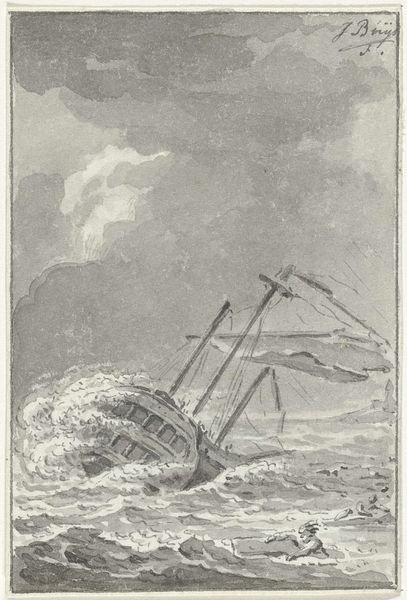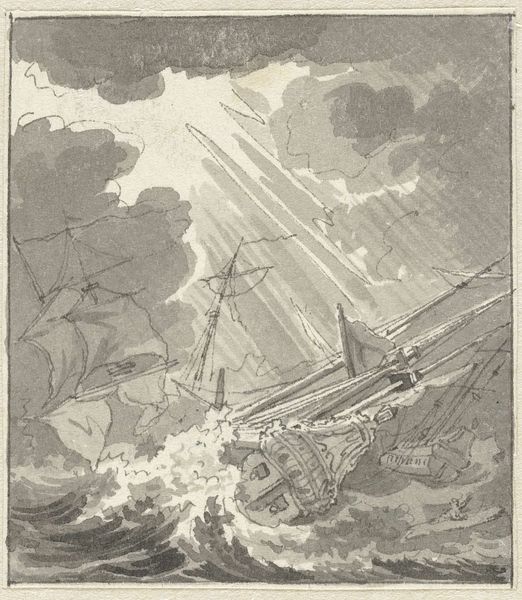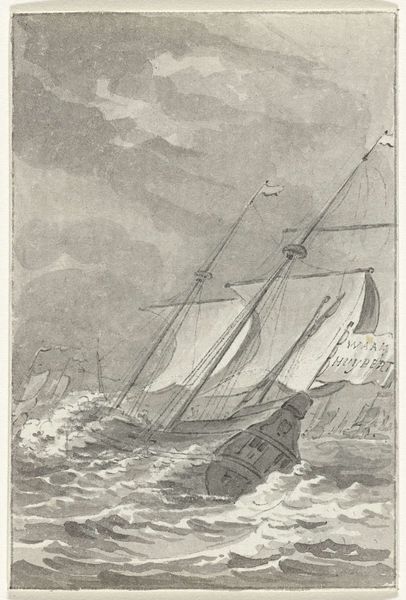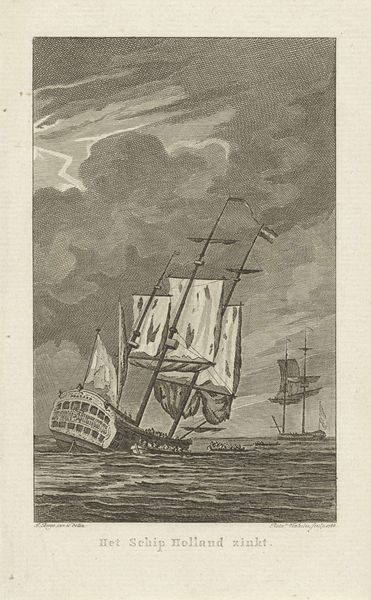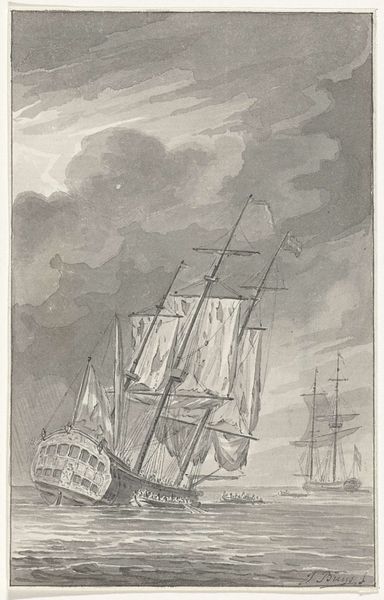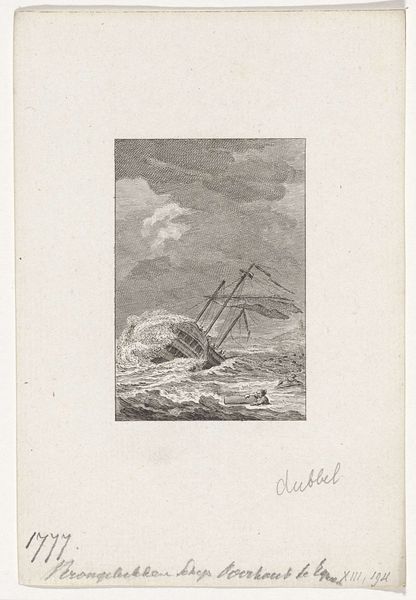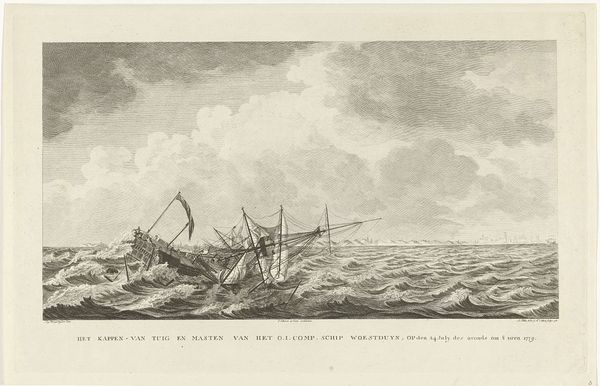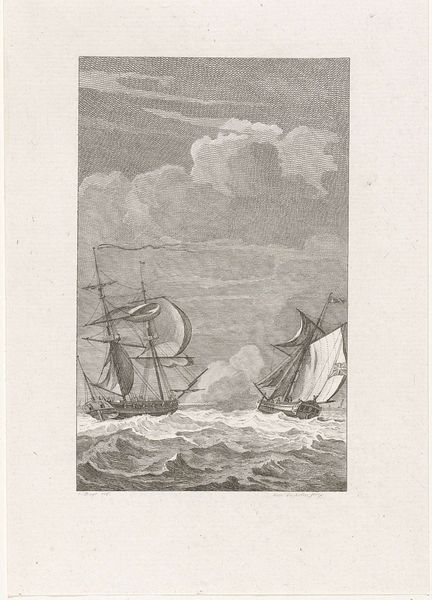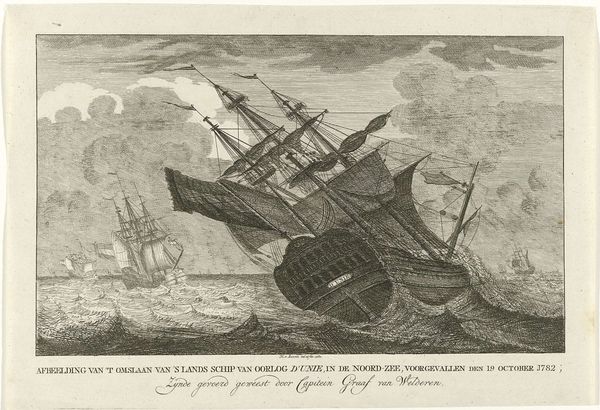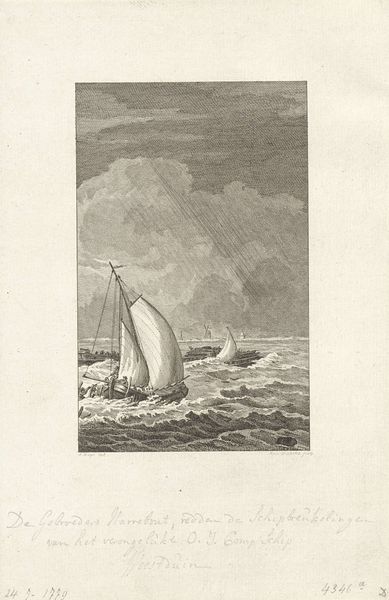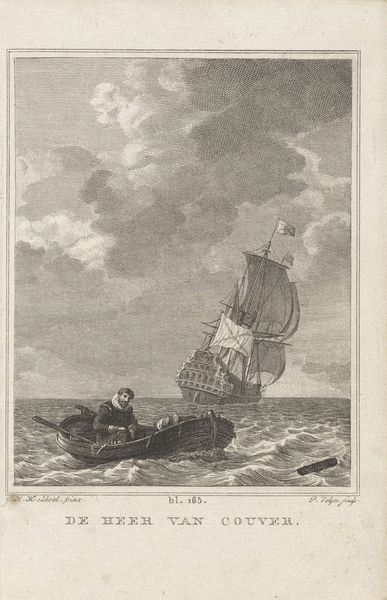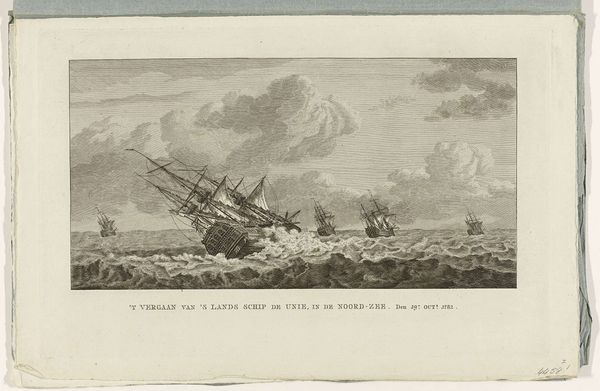
Dimensions: height 97 mm, width 61 mm
Copyright: Rijks Museum: Open Domain
Editor: Here we have Reinier Vinkeles' engraving and etching titled "Schipbreuk van de Overhout, 1777," made sometime between 1780 and 1795. It's a dramatic depiction of a shipwreck! What stands out to me is the incredible detail in the waves and the wrecked ship; the print really conveys the chaos of the event. How do you see this piece? Curator: Well, given my focus on the materiality and social context of art, I see this print as a document reflecting 18th-century Dutch maritime power and its inherent risks. The precise lines of the engraving, the repeatable nature of printmaking itself – these speak to a culture of documentation, of disseminating information about trade, empire, and, indeed, disaster. The shipwreck, we must remember, wasn't just a tragedy; it represented a potential disruption of the flow of commodities and power. Editor: That’s interesting, I hadn’t considered it as part of that larger system. Does the choice of etching and engraving—relatively accessible mediums—play into that accessibility of information for a wider audience? Curator: Precisely! This wasn't an oil painting destined for a wealthy collector. Prints like these were reproduced and distributed, reaching a broader segment of society interested in the activities, successes, and failures of the Dutch East India Company. How do you think that potential audience would interpret such imagery? Editor: I suppose, in some ways it acts as a sort of propaganda then, shaping the narrative around Dutch maritime endeavors – the heroism and danger inherent to them. Curator: Exactly. We see the ship depicted, its remnants. How long did it take to create? Who created it? Where does its cargo go, and what are those routes for raw materials worth to others? It is this material context, that reveals an alternative image in viewing this print, it reflects a visual component in the vast enterprise of material extraction that shaped that world. Editor: This has definitely changed my perspective. I now appreciate it’s not *just* a historical depiction of a shipwreck but also an insight into 18th-century Dutch material culture. Curator: And the complex systems of labor and capital behind even a seemingly simple print. That’s the materialist perspective!
Comments
No comments
Be the first to comment and join the conversation on the ultimate creative platform.
